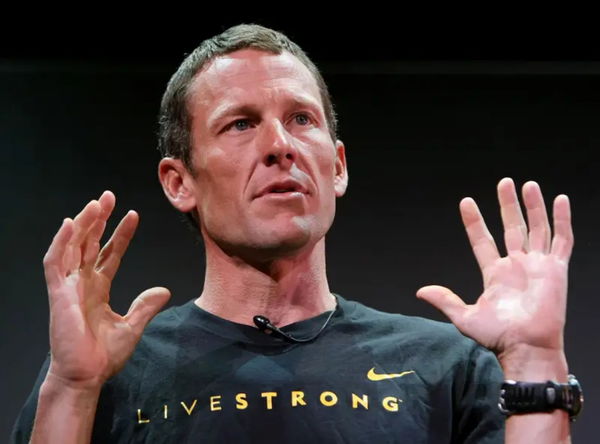

Lance Armstrong is a retired professional road racing cyclist. Besides having been involved in doping scandals, he’s been globally recognized as the face of one of the most influential non-profit movements of the 21st century.
The infamous cyclist is notorious for his antics involving the use of performance-enhancing drugs. Which eventually led to severe health complications that the athlete suffered when he was 25 years old. Additionally, the cyclist had once fought and overcome testicular cancer. After receiving the deadly news the cyclist’s life was left at a standstill.
ADVERTISEMENT
Article continues below this ad
But what is admirable of any athlete of Armstrong’s stature is their ability to endure and come back stronger. And Lance did so with the Livestrong Foundation. A non-profit cancer support initiative that raised billions of dollars in funding. In conversation with Peter Attia MD, Armstrong discussed what it was like during the initial stages of the movement.
Lance Armstrong had modest expectations
While answering a question about what it was like to navigate the cause, the retired professional cyclist stated, “One can think about it in a lot of different ways but it wasn’t so much about navigation at the time, it was more about having a disease or type of cancer with this huge stigma around it.”
Hearing the words “you have cancer” can be completely disorienting. We’re here to help. Since 1997, we've served over 250,000 people through Livestrong Navigation, saving them more than $93 million in related healthcare costs. Find help: https://t.co/lXSMBKCuw3 #25YearsOfImpact pic.twitter.com/n9tNq928xa
— LIVESTRONG (@livestrong) December 7, 2022
He further continued that young men like himself, “are in pain and are not gonna go out and advertise that. And most likely not seek help until its a problem.” Armstrong elucidated how he felt the need for change in outlook towards testicular cancer and came up with a revolutionary idea.
“Even as modest as the expectations were, it was like let’s just do it,” he explained the initial stance of the foundation. “Most people had no plan…it just felt like the time to do something,” he said.
View this post on Instagram
In addition, Armstrong explained how only a government agency with a steady cash flow is able to fund a movement of that stature. “One has to raise billions, maybe even trillions to properly fund that,” the athlete continued, “Because they ended up gaining so much power with the story and the brand of Livestrong… they funded three billion dollars in research and prevention”
ADVERTISEMENT
Article continues below this ad
Livestrong Foundation earned over three billion dollars
Based in Austin, Texas, Livestrong Foundation was established in 1997 by a well-known kid from the neighborhood who grew up to be a cancer survivor, besides also participating in the Olympics. The Livestrong brand came into effect in 2003 and Lance Armstrong continued to be its face till 2012 when he resigned after his admission to doping.

via Getty
JACO, COSTA RICA – NOVEMBER 01 (Photo by Ezra Shaw/Getty Images)
The crux of the foundation lay in its efforts to provide free, personalized services for people affected by cancer. This included navigating through financial, physical, emotional, and other practical challenges that an individual may face during this phase. It is also known for cancer survivor research and for funding other smaller NGOs. Presently, the company’s focus has been on improving patient care through impact funding.
ADVERTISEMENT
Article continues below this ad
Watch this story: World reacts to liver kings steroid reports
The foundation grew to the extent of opening the Livestrong Cancer Navigation Center. The brand has served over 100,000 people through free services like insurance management and counseling. The non-profit organization has generated more than $500 million worth of assets. After Lance Armstrong’s departure from the executive suite, the foundation’s revenue continued to drop from a whopping $15.8 million in 2011 to $3.2 million in 2018.
ADVERTISEMENT
ADVERTISEMENT
ADVERTISEMENT
ADVERTISEMENT

